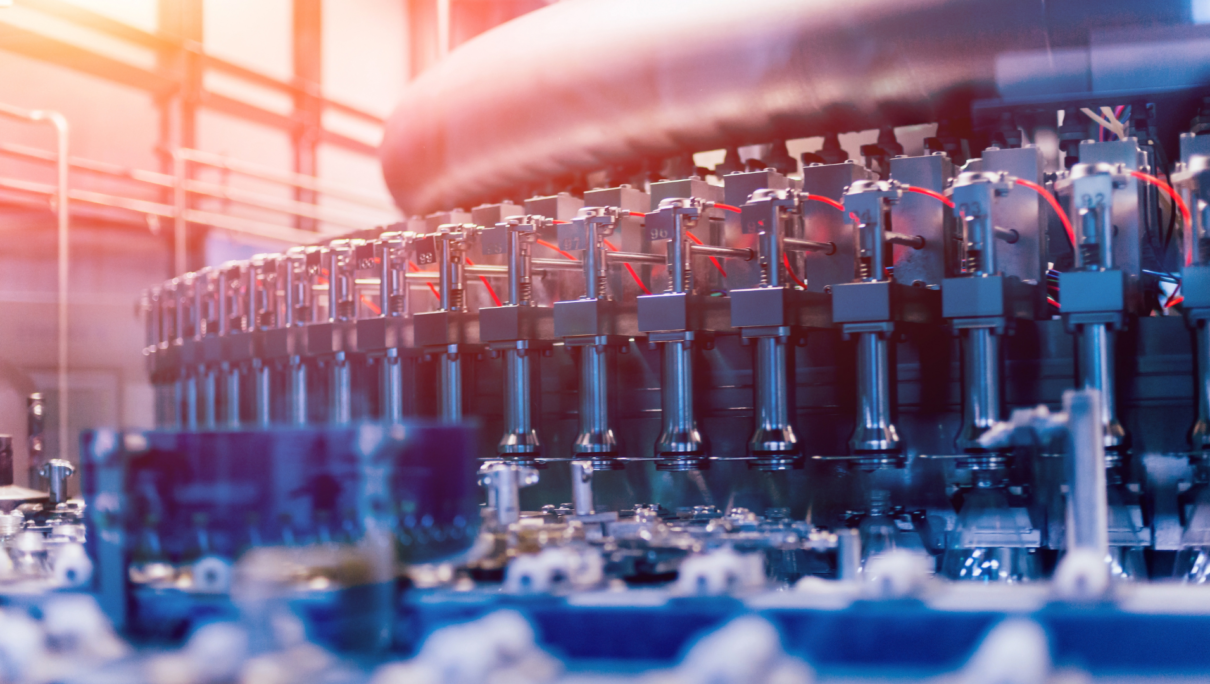From predictive maintenance to on-demand customization, explore how AI is revolutionizing the way goods are produced, processed, and perfected in modern factories.
In today’s rapidly evolving manufacturing landscape, artificial intelligence (AI) is no longer a distant future concept, but a pivotal player shaping the dynamics of the sector. From the corridors of smart factories to the buzz of production lines, AI for manufacturing is revolutionizing how things are made and managed.
This transformation isn’t just confined to implementing AI tools or having robotic workers on the production floor. The real marvel lies in the intricate dance of machine learning algorithms optimizing manufacturing processes, making supply chains more efficient, and ensuring quality control that surpasses human precision. These AI systems, from predictive maintenance informed by deep learning neural networks to computer vision ensuring impeccable quality assurance, are helping manufacturing plants to achieve levels of efficiency previously unattainable.
Artificial Intelligence for Manufacturing
The manufacturing sector, historically reliant on physical object manipulation and manual oversight, is undergoing a monumental shift. Advanced manufacturing technologies are being merged with AI solutions, leading to industrial automation that rivals science fiction. Consider the wonders of AI-based predictive maintenance, which not only anticipates equipment performance but also drastically reduces downtimes. Or the implementation of deep learning and machine vision, enabling robots to perform complex tasks with an agility and accuracy that often surpasses their human counterparts.
But AI’s influence doesn’t stop at the production facilities. The entire supply chain, from raw materials procurement to warehouse management, is benefitting from AI-based systems. Big data, drawn from historical records, is now being used for accurate demand forecasting, ensuring supply chain efficiency and significantly reducing purchasing price variance. Even areas like service management and inventory management are seeing a digital transformation driven by AI, leading to reduced wastage, especially for products with a short shelf life.
Manufacturing companies, large and small, are initiating pilot projects, implementing AI in areas ranging from AI-based product development to continuous monitoring of infrastructure performance. These examples just scratch the surface of the potential AI holds. Let’s take a closer look at some of the most prominent use cases of artificial intelligence in the manufacturing industry.
AI for Manufacturing: 5 Use Cases
AI and predictive maintenance
In the bustling heart of modern manufacturing plants, predictive maintenance has long stood as a crucial practice. Yet, traditional methods often fell short, relying heavily on scheduled checks and potentially leading to premature servicing or, worse, unexpected machine breakdowns and costly downtime. The adoption of AI in manufacturing, however, has spurred a game-changing evolution in how we approach equipment maintenance.
Central to this revolution is the use of machine learning algorithms, which harness vast amounts of historical data to monitor machinery health in real-time. These algorithms, underpinned by deep learning neural networks, detect intricate patterns and anomalies, thus forecasting when a machine might require attention. This shift from scheduled checks to AI-based predictive maintenance ensures that interventions are timely, reducing unnecessary downtimes and dramatically extending equipment lifespan.
Sensors embedded with computer vision—a pivotal application of artificial intelligence—have emerged as invaluable tools in this new maintenance paradigm. These sensors, diligently scanning the production floor, can identify physical inconsistencies like minute wear, rust, or even cracks. Cross-referenced with historical data from similar machinery, AI systems can gauge the potential risk of these abnormalities and recommend preemptive actions.
Moreover, the integration of AI tools into manufacturing processes aids in understanding optimal equipment settings, assessing energy consumption rates, and ensuring quality control of raw materials—all pivotal for peak machine performance. The advanced manufacturing technologies that now utilize AI solutions for predictive maintenance also consider factors like infrastructure performance, ensuring a holistic health assessment.
For manufacturing companies, the shift to AI-driven predictive maintenance is not just innovative—it’s transformative. By offering real-time insights, AI-based systems provide a proactive strategy rather than a reactive one, drastically reducing costs associated with sudden breakdowns or inefficient servicing. This deep integration of AI into the manufacturing sector—from the assembly line to supply chain management—heralds a new era where predictive maintenance is more than just a practice; it’s a comprehensive, data-driven science.
AI and supply chain management
Supply chain management has always been the intricate backbone of the manufacturing industry. Balancing supply with demand, optimizing inventory management, and ensuring timely procurement of raw materials are tasks that have traditionally required human foresight and meticulous planning. But as the digital transformation sweeps across the manufacturing sector, AI is redefining the very core of supply chain dynamics.
The advent of AI in manufacturing has ushered in smarter, more efficient supply chains. With the integration of machine learning algorithms, supply chain management has transitioned from merely managing inventory to accurately forecasting demand. Advanced AI tools process vast amounts of big data, including historical sales, seasonal trends, and market fluctuations, to produce accurate demand forecasting. This reduces waste from overproduction and mitigates the risks associated with underproduction, especially for products with a short shelf life.
One of the most significant breakthroughs AI brings to supply chain management is the optimization of procurement data. By continuously monitoring purchasing price variance and assessing global market trends, AI systems can recommend the best times to purchase raw materials or negotiate vendor contracts, ensuring both quality and cost-effectiveness.
Warehouse management, too, is undergoing a profound transformation with AI. Robotic process automation, combined with machine vision, enables swift and error-free sorting and stocking of goods. AI robots, equipped with sensors and deep learning capabilities, can navigate vast warehouse spaces, making real-time decisions on storage, retrieval, and transportation. This not only expedites processes but also significantly reduces manual errors and associated costs.
AI’s influence is even shaping the transportation aspect of supply chains. Connected vehicles, infused with AI systems, can predict optimal routes, considering real-time traffic data, weather conditions, and delivery urgencies. This leads to faster delivery times, reduced fuel consumption, and enhanced supply chain efficiency.
Furthermore, AI offers continuous monitoring and performance analysis of the entire supply chain, from the procurement of raw materials to the delivery of the finished product. This ensures quality control at every step, aligns production processes with market demand, and provides invaluable insights for future planning.
But perhaps the most revolutionary aspect of AI in supply chain management is its ability to adapt. As market conditions change, consumer expectations evolve, and unforeseen challenges arise, AI-based systems can recalibrate strategies in real-time, ensuring the manufacturing sector remains resilient, agile, and ahead of the curve.
AI and warehouse management
As we navigate deeper into the intricacies of the manufacturing sector, it’s impossible to overlook the pivotal role of warehouses. These massive facilities, historically brimming with rows of goods and bustling with human activity, are undergoing a profound metamorphosis. The catalyst? Artificial intelligence.
The digital transformation sweeping the manufacturing industry is particularly evident on the warehouse floor. Traditional practices are giving way to AI-driven innovations, making inventory management, data collection, and overall warehouse operations more streamlined and efficient.
At the heart of this evolution lies robotic process automation. AI robots, armed with deep learning neural networks, now traverse the vast expanses of warehouses. Unlike their human counterparts, these robotic workers can operate around the clock, ensuring that goods are stored, retrieved, and transported with unparalleled speed and precision. Equipped with sensors and machine vision, they can swiftly identify and locate items, significantly reducing the time taken for order processing and dispatch.
AI in warehouse management also addresses the perennial challenge of space optimization. Through machine learning algorithms, AI systems can analyze storage patterns, product turnover rates, and the physical dimensions of items to devise optimal storage strategies. This not only maximizes space but also ensures faster access to high-demand items.
Energy consumption is another facet revolutionized by AI. Smart warehouses, underpinned by AI-based systems, can monitor and regulate lighting, heating, and cooling in real-time, adjusting to external weather conditions and internal activity levels. This results in significant energy savings and creates a sustainable, eco-friendly storage environment.
Furthermore, the incorporation of computer vision into warehouse management is a game-changer. These systems can inspect goods upon arrival for quality assurance, checking for damages, discrepancies, or any signs of wear. They also play a pivotal role in quality control during dispatch, ensuring that orders are accurate and meet consumer expectations.
Predictive maintenance, a concept we’ve explored in the context of manufacturing processes, finds its utility here as well. AI tools continuously monitor equipment performance within the warehouse, from conveyor belts to forklifts, predicting when maintenance is due and preventing unexpected downtimes.
Augmented reality is also making its foray into warehouse operations. Workers equipped with AR devices can receive real-time data overlays, guiding them to specific locations, providing product details, or even assisting with complex tasks. This blend of the physical and virtual realms not only boosts efficiency but also reduces the margin of error.
AI and manufacturing process automation
Diving deeper into the manufacturing landscape, we find ourselves at the nexus of innovation: process automation. It’s in this vital area that AI is profoundly shaping the future of production.
Manufacturing process automation, at its core, seeks to enhance productivity, lower costs, and improve product quality. The introduction of AI into this realm is not merely an upgrade—it’s a transformative overhaul. With machine learning algorithms and advanced manufacturing technologies at the helm, process automation is evolving at an unprecedented rate.
Central to AI’s influence is its ability to manage complex tasks with precision and consistency that’s challenging for human counterparts to match. Through continuous monitoring, AI systems can adjust equipment settings in real-time, ensuring optimal performance and minimizing waste. These systems, rooted in deep learning neural networks, can swiftly analyze vast datasets, including historical data and real-time feedback, to make instantaneous decisions that optimize production processes.
Robotic process automation, a term often associated with office tasks, finds its true potential on the manufacturing floor. AI robots, integrated with machine vision, can perform intricate assembly tasks, quality assurance checks, and even handle raw materials with dexterity. These robotic workers, backed by computer vision, not only streamline operations but also ensure consistent product quality.
One of the standout applications of AI in process automation is predictive maintenance, which we’ve previously delved into. By forecasting equipment performance and preempting potential breakdowns, AI ensures uninterrupted production lines, reducing downtimes and associated costs.
Beyond machinery, AI also plays a pivotal role in material management within the manufacturing process. Using big data analytics, AI systems can monitor raw material quality, assess its suitability for the production line, and even predict the best usage patterns to maximize output quality and quantity.
Furthermore, augmented reality and virtual reality are emerging as powerful tools in process automation. They offer virtual simulations of production processes, allowing manufacturers to test and refine workflows before implementing them. This not only saves time and resources but also paves the way for innovation, as manufacturers can experiment with various scenarios without physical constraints.
AI for product development
Product development is a cornerstone of the manufacturing industry. It’s where ideas take shape, and market needs are transformed into tangible products. With the introduction of AI, this crucial phase is seeing significant enhancements and efficiencies.
Using AI in product development starts with understanding consumer expectations. Machine learning algorithms analyze big data, like reviews, feedback, and market trends, to provide insights into what customers truly desire. This ensures that new products align closely with market demands.
One of the significant benefits of integrating AI tools into product development is speed. AI-based systems can swiftly run simulations, test different product designs, and predict potential challenges. This reduces the time from concept to prototype, allowing manufacturing companies to be more agile and responsive.
Computer vision and virtual reality are also playing pivotal roles. Design teams can use these technologies to visualize products in real-life settings before they’re even built. This aids in refining designs and ensuring they meet both aesthetic and functional criteria.
Additionally, AI aids in quality assurance during product development. Machine learning algorithms can predict how materials will respond over time, ensuring longevity and durability. This becomes especially crucial when dealing with raw materials that have variable properties.
Furthermore, with the advent of smart factories and AI-driven production processes, feedback loops are faster. If a product design needs tweaks post its initial production, AI systems can provide real-time feedback, leading to quicker iterations and refinements.
AI for Manufacturing: Merging Tradition with Innovation
The integration of AI into the manufacturing sector isn’t just a trend; it’s a significant shift that’s making production more efficient, adaptable, and forward-thinking. Across every facet we’ve explored, from maintenance to product development, AI’s influence is evident. It’s helping businesses reduce costs, anticipate challenges, and better meet customer needs.
While we’ve already seen substantial changes, we’re still at the early stages of understanding all that AI can offer. As technology evolves and businesses become more familiar with its potential, we can expect even more innovations that will further streamline operations and drive growth. For manufacturers looking to stay competitive and relevant in a fast-paced world, adopting and adapting to AI isn’t just an option—it’s essential. The future of manufacturing is being shaped by AI, and it’s a future filled with promise and practicality.

Judy Dunn
Head of Marketing





